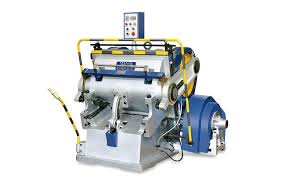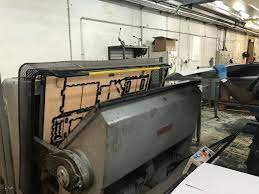Die-Cutting Machinery: Streamlining Complex Shapes with High Precision
Die-cutting machinery plays a pivotal role in the manufacturing sector, particularly in industries that require high precision and versatility in cutting various materials. This technology is essential for producing intricate designs and complex shapes with exacting standards. This article examines the transformative impact of die-cutting machinery on production processes, highlighting its efficiency, precision, and ability to handle diverse materials.
Advantages of Die-Cutting Machinery
- High Precision Cutting: Die-cutting machinery provides unmatched precision in cutting detailed patterns and complex shapes. This precision is crucial for ensuring consistent quality across products, which is especially important in industries where small discrepancies can lead to significant issues in assembly or performance.
- Enhanced Productivity: By automating the cutting process, die-cutting machines significantly speed up production, allowing manufacturers to complete large orders in a shorter time frame. This efficiency is vital for meeting market demands and maintaining competitive advantage.
- Material Versatility: Modern die-cutting machines are capable of handling a variety of materials, including paper, plastic, metal, and textiles. This versatility allows businesses to use a single machine for multiple production processes, optimizing their investment and reducing the need for multiple specialized machines.
- Reduced Waste: Precision in cutting not only improves product quality but also minimizes material waste. By maximizing material utilization, die-cutting machinery supports cost-saving and environmental sustainability efforts within the manufacturing process.
Industries That Benefit from Die-Cutting Machinery
- Packaging Industry: Essential for creating custom packaging solutions, die-cutting machinery allows for the production of boxes, inserts, and displays that fit products perfectly, enhancing protection and shelf appeal.
- Automotive: In the automotive sector, die-cutting is used for creating gaskets, seals, and interior components, all of which require high precision for proper fit and function.
- Electronics: This machinery is crucial for cutting insulating materials, conductive films, and various components used in electronic devices, where precision can directly affect the performance and safety of the final product.
- Fashion and Textiles: Die-cutting machines facilitate the design and production of intricate fabric patterns and components used in the fashion industry, helping designers bring their creative visions to life efficiently.
Considerations for Investment
- Evaluate Production Needs: Assess the types and thicknesses of materials frequently used in your production to choose a die-cutting machine that best fits your operational requirements.
- Cost-Benefit Analysis: Consider the initial cost of the machine against the potential increases in production speed, material savings, and product quality. Calculate the return on investment to understand how quickly the machine will pay for itself.
- Supplier Reliability: Opt for machines from reputable manufacturers known for durability and reliability. Good after-sales support and easy access to spare parts are essential for maintaining the machine’s performance over its lifespan.
Conclusion
Die-cutting machinery is a strategic asset for any business looking to enhance its manufacturing capabilities. With its precision, efficiency, and versatility, this technology not only improves the quality and consistency of products but also boosts overall productivity. As industries continue to evolve with increasing demands for precision-manufactured products, investing in advanced die-cutting technology is crucial for maintaining a competitive edge in the market.



